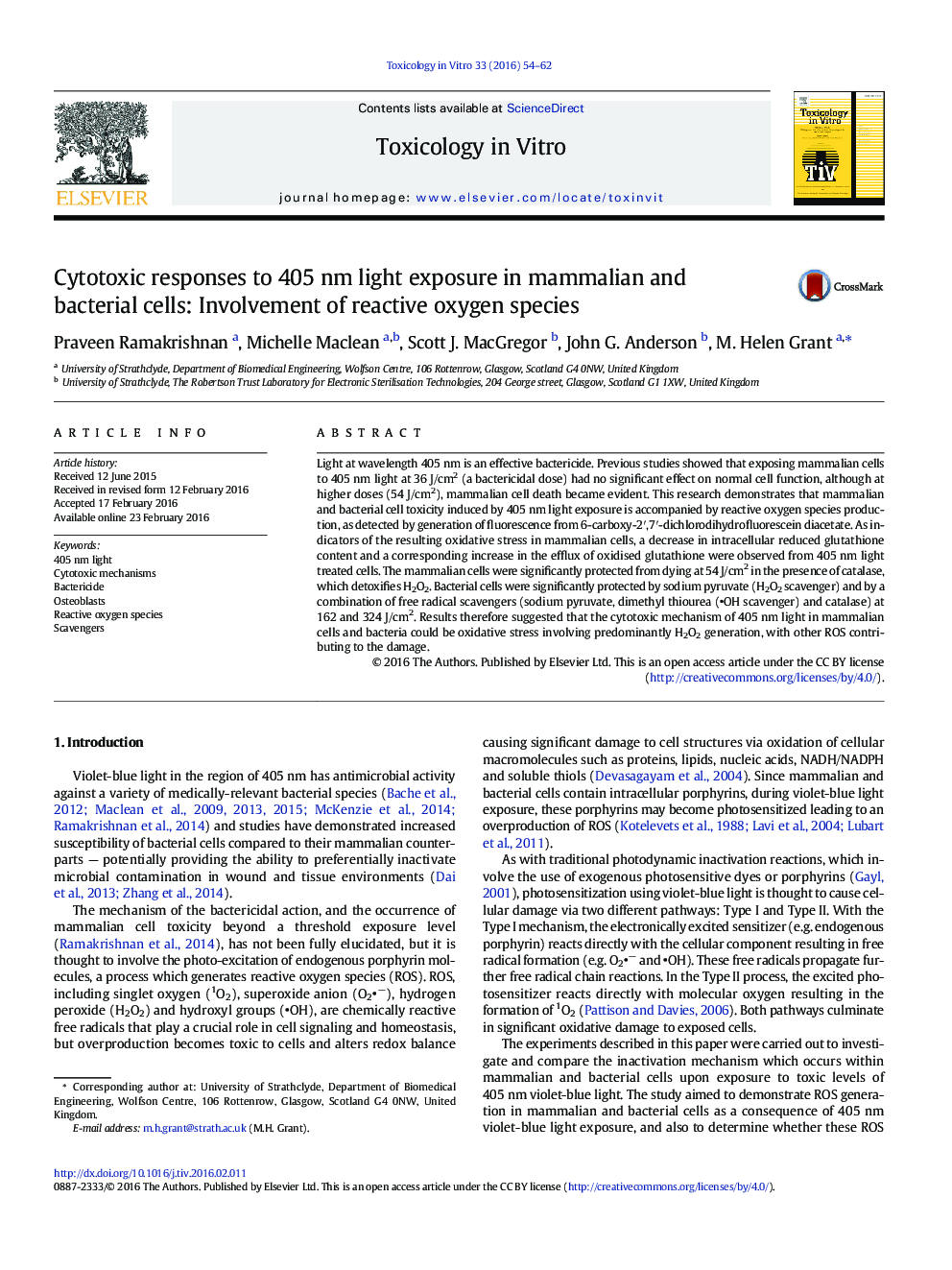| کد مقاله | کد نشریه | سال انتشار | مقاله انگلیسی | نسخه تمام متن |
|---|---|---|---|---|
| 5860994 | 1562712 | 2016 | 9 صفحه PDF | دانلود رایگان |

- Exposure to increasing doses of 405Â nm light increases cell reactive oxygen species production in cells.
- 405Â nm light exposures at higher doses induce cytotoxicity.
- Free radical scavengers offer cytoprotection at toxic exposure levels of 405Â nm light.
- 405Â nm light induced cytotoxicity is attributed to reactive oxygen species - mainly H2O2 - production and oxidative stress.
Light at wavelength 405Â nm is an effective bactericide. Previous studies showed that exposing mammalian cells to 405Â nm light at 36Â J/cm2 (a bactericidal dose) had no significant effect on normal cell function, although at higher doses (54Â J/cm2), mammalian cell death became evident. This research demonstrates that mammalian and bacterial cell toxicity induced by 405Â nm light exposure is accompanied by reactive oxygen species production, as detected by generation of fluorescence from 6-carboxy-2â²,7â²-dichlorodihydrofluorescein diacetate. As indicators of the resulting oxidative stress in mammalian cells, a decrease in intracellular reduced glutathione content and a corresponding increase in the efflux of oxidised glutathione were observed from 405Â nm light treated cells. The mammalian cells were significantly protected from dying at 54Â J/cm2 in the presence of catalase, which detoxifies H2O2. Bacterial cells were significantly protected by sodium pyruvate (H2O2 scavenger) and by a combination of free radical scavengers (sodium pyruvate, dimethyl thiourea (OH scavenger) and catalase) at 162 and 324Â J/cm2. Results therefore suggested that the cytotoxic mechanism of 405Â nm light in mammalian cells and bacteria could be oxidative stress involving predominantly H2O2 generation, with other ROS contributing to the damage.
Journal: Toxicology in Vitro - Volume 33, June 2016, Pages 54-62